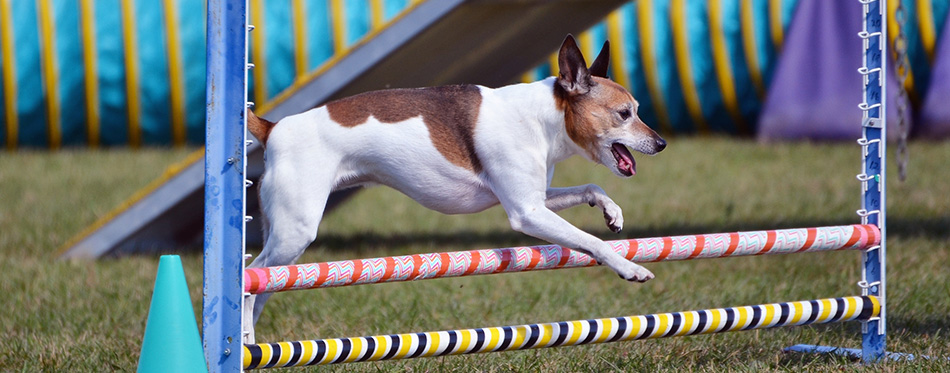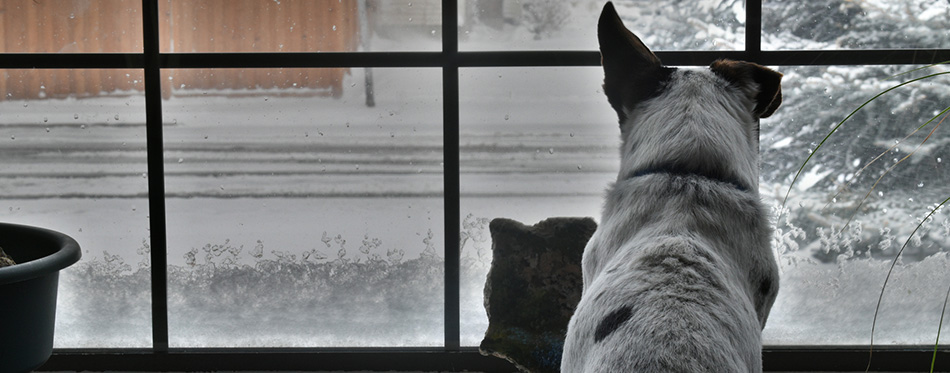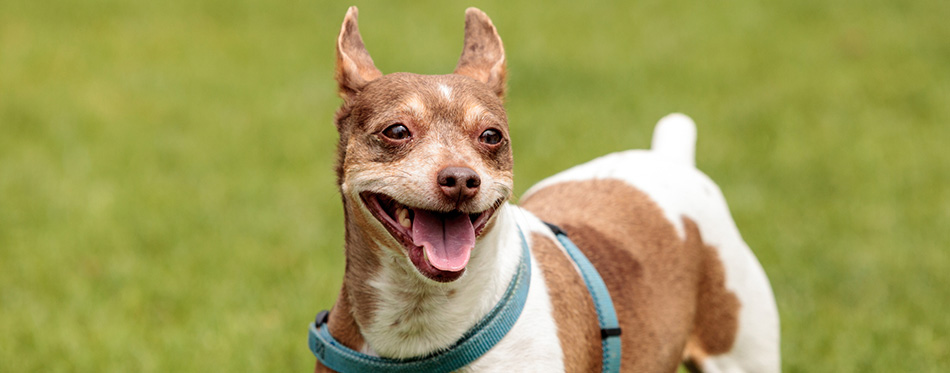A small dog with excessive energy and a big heart, the Rat Terrier is an active, loyal as well as playful breed that can fit into many homes. Originated in Britain, but later arrived in the US, the services of the breed was originally employed in farms for multiple functions. With the passage of time, it has made its way into several households as well as into the hearts of dog admirers. The breed is great for affection and exercise and is also great with children.
Though the Rat Terrier is intelligent, it can be quite stubborn and difficult to train. However, you will get the better of the Rattie when you give it quality time, and your reward will be an obedient canine companion that will always be by your side. Continue reading to get the details on the breed’s history, health issues, training, and many more.

History of the Rat Terrier
There is no record on the origin of the first Rat Terrier, though we have heard some tales that it was Theodore Roosevelt who coined the name. However, the earliest record we have of a rodent-hunting-hound is about Hatch, a small-sized dog whose remains were discovered from the flagship of Henry VIII known as the Mary Rose. According to the records, the ship sank in1545, but was found, and raised back to the surface in 1982. It was believed that Hatch was a mongrel that the sailors took on board to function as a mouse catcher.
The name of the breed emanated from the occupation of the dog’s earliest relatives that were brought into the United States of America by some plebeian UK migrants as they were then specifically used for the purpose of rat-baiting. But for the most part, the hounds were bred for swiftness. Their speed was employed in hunting games for animals like hares and squirrels as well as to control the rodents.
Following the 1890s, as the breed gained popularity in the US, several of these rat-hunting-hounds were crossbred with; Beagles, Italian Greyhounds, and Whippets. The Rat Terrier’s agility and speed were greatly improved by the mix of the Whippet and Greyhound, but it has an extraordinary scenting ability and a good pack mentality from the Beagle. All these traits in the Rat Terrier resulted in a considerable versatility, extraordinary sense of smell, perfect disposition as well as an outstanding speed.
President Theodore Roosevelt was one of the biggest fans of the breed, and they were highly valued as loyal hunting companions and vermin hunters by American farms during the 2nd to the 4th decade in the 20th century. However with the growth of commercial farming in the 1950s, the population of the Rat Terrier went into decline, but the breed’s bloodline was preserved by its biggest loyalists, which is the reason we still have the Rat Terrier in existence today.
The Rat Terrier was first recognized as a dog breed by the UKC (United Kennel Club) in 1999, after that, it took the AKC (American Kennel Club), a little over ten years to recognize the breed in 2010. However, the AKC has already had Rat Terriers in contests and in companion events since 2006.
Quick Facts About the Rat Terrier
Here are some quick facts about the Rat Terrier breed which will further explain its nature and characteristics;
- When the talk is about Rat Terrier, then, bubbly, spirited, and energetic are some few characteristics you should bear in mind.
- On the AKC rating list, the Rat Terrier occupies the 96th position as the most popular canine breed. It may not be in the same category as the Labrador retriever, but it still made the first 100.
- As for body size, the hound comes in a couple of variations: there is the Miniature as well as the Standard. For the Miniature sized Rat Terrier, they can grow up to 13 inches tall at the max, but their least size is 10 inches. On the other hand, the standard sized Rat Terrier can max out at 18 inches, though the cut off height with the Miniature is 13 inches.
- Looking at the breed’s weight, the heaviest can weigh as much as 25 pounds with the least starting at 10 pounds.
- Relative to other canine breeds, the Rat Terrier has a rather long life-span which peaks at 18years. Even the ones that didn’t live very long can still endure up to 12 years.
- Coming to appearance, the Rat Terrier has a shiny and thick fur, with a coat that is naturally smooth but short. However, the colors vary; we have seen blue, white, red, lemon, orange as well as chocolate. Some of the breed is known to come in color combos like tan with white, black with white, tan with rust or black with rust.
- The breed is renowned for its natural propensity to always dig holes, and in combination with the Rat Terrier’s high prey drive, you can well expect it to leap right over or dig under your fence. In fact, the hound has a compulsion to chase that is best described as immeasurable.
- One thing you should note about the Rat Terrier is that it is one hound that should never go on a walk unleashed. Though it comes with a small stature, the breed needs loads of exercise as it is born with a very high energy level.
- In addition to being skilled at hunting, the modern-day Rat Terrier is also adept at caregiving. The breed is found to be extremely good at one role that only a few canine breeds can perform with maximum effectiveness – the function of a service dog. The services of the Rat Terriers are now employed in several assisted living environments, in hospice, and they also function as therapy dogs for depression patients. Some law enforcement agencies currently use them in contraband search.

Things You Should Know
Health
Though generally healthy, Rat Terriers are still susceptible to certain health problems, just like every other breed. While it is not all of them that will get these diseases, any prospective adopter of the breed should be well aware of them.
Another important fact is that you should always purchase your puppy from an experienced breeder that will be able to provide the health clearances of the parents of any puppy you wish to acquire. The essence of health clearance is to show that a dog is already tested and cleared for any condition.
The health clearances you should expect for the Rat Terrier breed include the one for hip or elbow dysplasia, von Willebrand’s disease and hypothyroidism from OFA (Orthopedic Foundation for Animals), the scores are usually fair or better. Auburn University will issue the one for thrombopathia, and CERF (Canine Eye Registry Foundation) will certify that the dog’s vision is normal.
Some of the diseases of the breed include;
- Allergies: Allergies are quite widespread in the canine population, and the Rat Terrier breed is not exempted. This kind of ailment comes in three types, we have: food allergies which are avoided by removing certain foods from your pet’s diet; Contact allergies, which is a resultant effect of a dog’s body contact with such things as flea powders, bedding, dog shampoo and many more; inhalant allergies, this emanates from airborne allergens like dust, pollen, and mildew. Treatment is greatly dependent on the cause, which may include medications, dietary restrictions, as well as environmental changes.
- Malocclusion: This is also called incorrect bites and comes in the form of a somewhat malformed jaw structure which makes the dog’s jaw to be misaligned. This kind of ailment has three types, which are all common in the Rat Terrier. We have overshot bite when the upper part of the jaw extends past the lower part. The effects are difficulty in grasping, and the dog’s lower teeth may bite into the roof of its mouth in severe cases. The reverse is the case in undershot bite, here; the lower jaw is the one that extends out more, causing a lot of difficulties and calls for a surgery session to correct. The third is wry mouth a distortion of the mouth, causing a faster growth in one side and results in difficulty in grasping and eating. Many cases of Malocclusion are known to self-correct as the puppy grows, but the chances of self-correction will slim down after ten months. At this stage, corrective surgery becomes a necessity, but only when the puppy has completed its growth process. Corrective surgery for this kind of condition may involve; crown height reductions, tooth extraction, as well as the use of spacers.
- Slipped Stifles: This is also called Patellar Luxation, which is prevalent in small dogs. The condition happens when a dog’s knee joint often slides in and out of position (always occurs at the hind limb). Some dogs can live a moderately normal life with the ailment, but it has crippled many.
- Demodicosis or Demodectic Mange: The Demodex mite is responsible for this condition, and the puppies get it from their mother for their initial few days of life. It is strictly a mother to pup ailment, Demodex mites are found in the hair follicles where they live without causing any problems; however, a Rat Terrier with compromised or weakened immunity can get demodectic mange. Its localized forms are realized in the form of a scaly, red balding patch of skin on head, limbs, and neck. Though it can heal without input, still visit the vet to stop the condition from developing into the extensive type of demodectic mange that covers the whole body and results in infection.
Training
As a result of its natural intelligence, the Rattie can be a trainer’s joy as it learns very easily, responding very well to many positive reinforcement methods and techniques. The extensive use of treats, praises, and other forms of rewards are recommended. Try to remove boredom from the training sessions by going for short periods at intervals. Another trick of the trade is to keep things as interesting as possible. The Rattie is known to excel in activities like tracking, flyball, agility, and rally. For more options head over to our guide on dog agility tunnels.
For the puppies, their training should commence immediately you bring them home; this is to make sure that the hound learns to be obedient and listen to instruction as it grows up. It is also good to try crate training with the breed as it aids a lot with destructive chewing. But then, don’t allow your canine friend to overstay in his crate as it is important that the dog takes-in a lot of exercises while exploring its surroundings. The puppies can attend Puppy Kindergarten classes. Find out more about dog crates here.
Exercise
The Rat Terrier may be a small dog, but the energy level is quite high, and if you fail to match their pent up energy with the right activities, they may unleash storm on your household. The breed is just like Houdinis with a likeness for digging; you may find them digging underneath your fence and more often than not, they leap right over it. What this means is that whether you exercise Ratties or not, the breed will always find a way to release its pent up energy, it can engage in incessant barking, dig holes in the backyard, chew on the furniture and carpet and even latch onto things that a dog would normally avoid. The breed can comfortably fit into an apartment, but you should ensure to let the Rattie go outside for its daily exercise needs.
Nutrition
Recommendations are that you feed your Rat Terrier with the following quantities of dry dog food daily;
- 1/4 – 1/2 cup a day for 10 pounds or less.
- 1/2 – 1 cup a day for 10 –15 pounds.
- 3/4 – 1.5 cups a day for 20-30 pounds.
- 5 – 2 cups a day for 30-40 pounds.
You have to note that the nutrition requirement for your dog is largely dependent on its age, size, metabolism, build, as well as activity level. Just like humans, dogs are individuals whose dietary needs vary. Needless to say that a hound with a high activity level will need more food than the one with the lesser activity. The quality of the dog food has to be taken into consideration as it makes a whole lot of difference. High-quality dog food nourished your canine friend, and you don’t need to shake much into its food bowl.
Related Post: Automatic Dog Feeders
The best is to feed twice daily to keep your pet in tip-top shape, try the hands-on test, and the eye test if you are not sure whether your canine friend is overweight.
First, decipher the dog’s waist by looking down at him, your hands should be positioned on its back with thumbs along the hound’s spine and fingers spread out downward. If you are unable to see the ribs without applying much pressure, then, your canine companion is in for more exercise and less food.
Related Post: Dog Food for Weight Loss
Grooming
Dog parents who are averse to daily brushing of their pet’s coat should do well to settle for a Rattie as it only needs to be brushed once a week. This is as a result of its short and rather easy-care coat. Though the coat can also shed during the shedding seasons. Just keep your vacuum cleaner handy during Fall and Spring as your home will be filled with lots of dog hair.
The remaining part of the grooming needs involves nail trimming that should be done every two weeks or as when due. Always remember the ears which should be cleaned out with the right dog ear cleaner when it gets dirty. Teeth brushing should be done every other day.
Dog toothbrush, dog toothpaste, dog dental spray, dog shedding brush, dog nail clippers, and other dog grooming guides may come in handy. Check them out!

Temperament
The Rat Terrier has been described by many as a four-legged dynamo with sociable personality, and jovial temperament which is quite infectious among the canine population. It has a passionate desire to always stay in the company of its human family. This only means that it should never be allowed to stay alone for long; otherwise, the dog can change into something less pleasant. Rattie is an intelligent breed, which is why it was able to hound vermin in American farms between the 1920s and 40s. When you apply the right training methods, the breed is quite easy to train. However, the training sessions should be interesting, as well as short.
The dog is highly valued for its work ethic and functions as a first-rate companion for people who love hounds with excessive energy. The list of the Rat Terriers positive qualities still extend to include patience, and when you raise it with children, the dog can easily adapt to kids and thus become their greatest companion. The hound loves loads of human interaction and is not averse to having an abundance of attention, which ensures a healthy as well as happy life for the Rat Terrier.
Adopters of Rat Terriers should be aware of the fact that the breed has the propensity to be overprotective of its loved ones and show hostility to strangers. This is the reason early training is recommended for them to turn out as well-mannered, and obedient household pets as they grow up. However, recommendations from experts are that you should always monitor any interaction between kids and dogs, no matter how sociable you think your pet is.
Source:
- Rat Terrier – AKC

